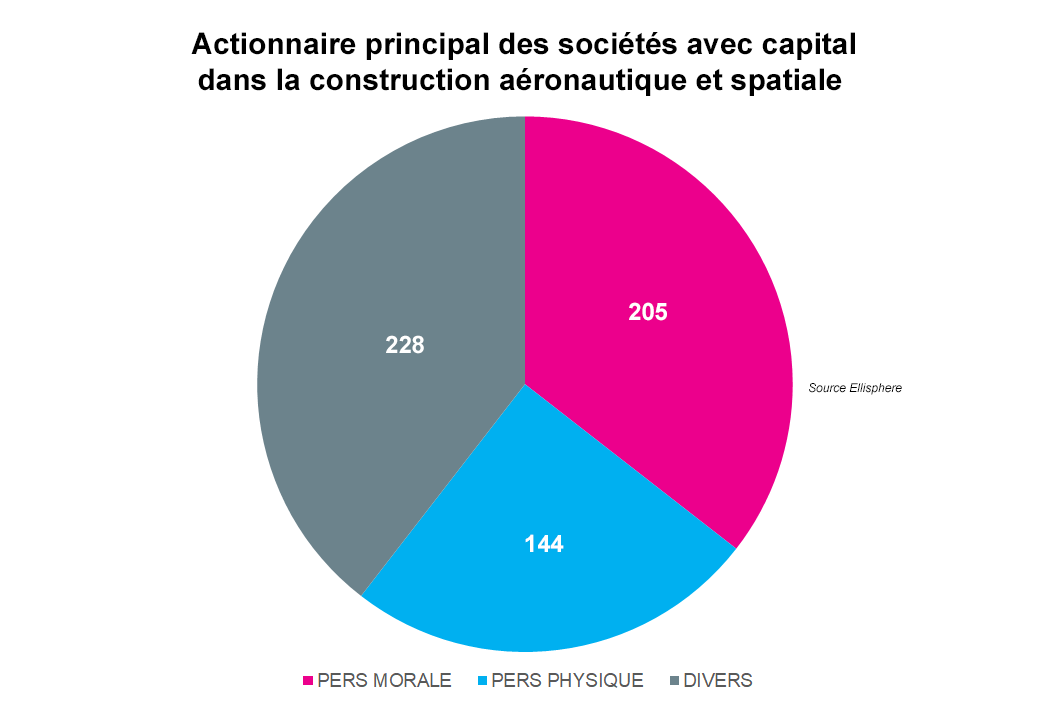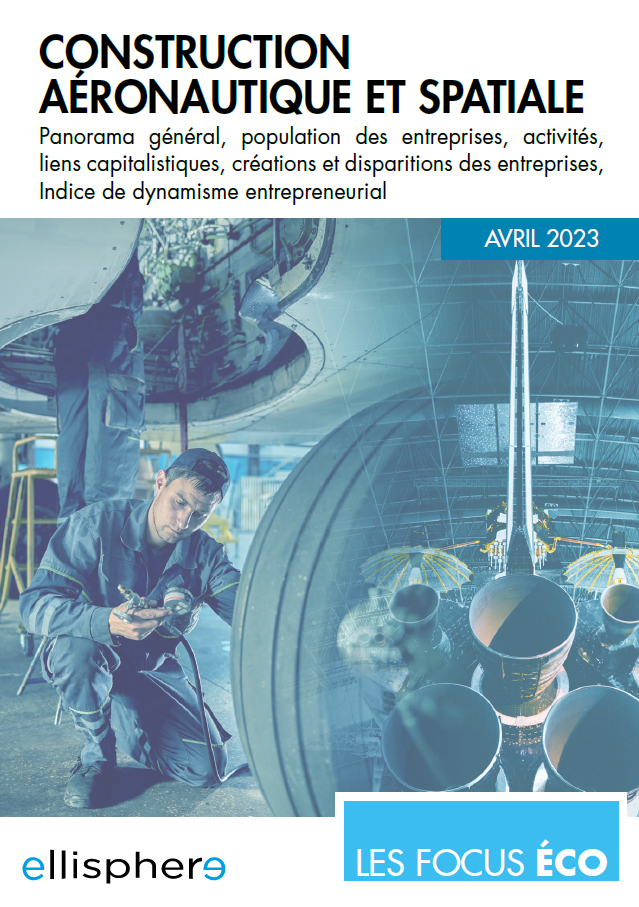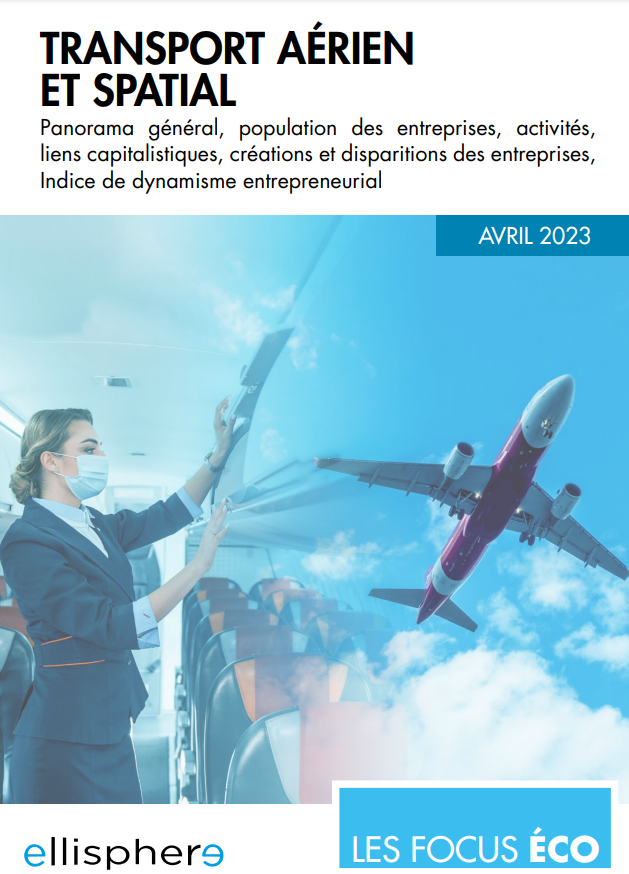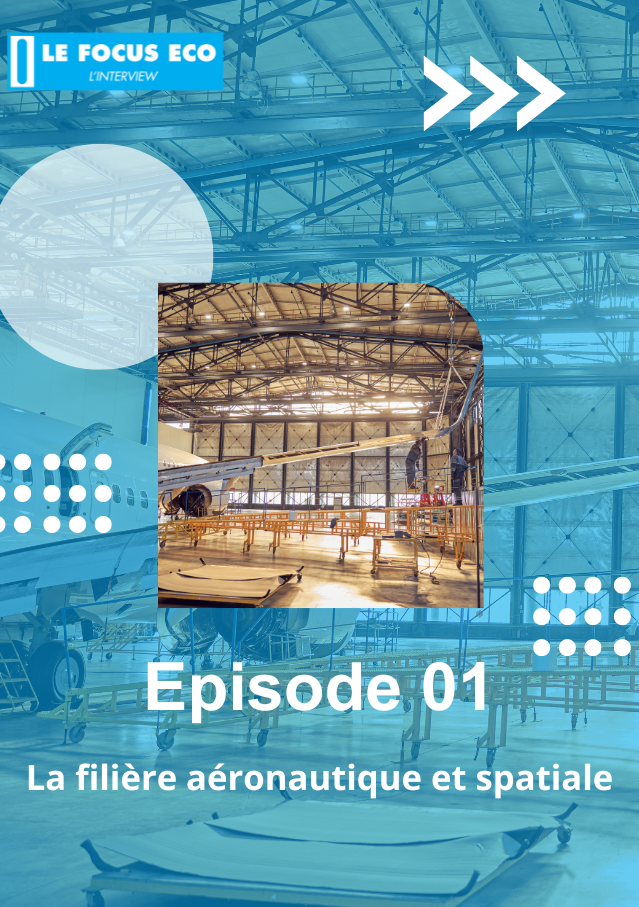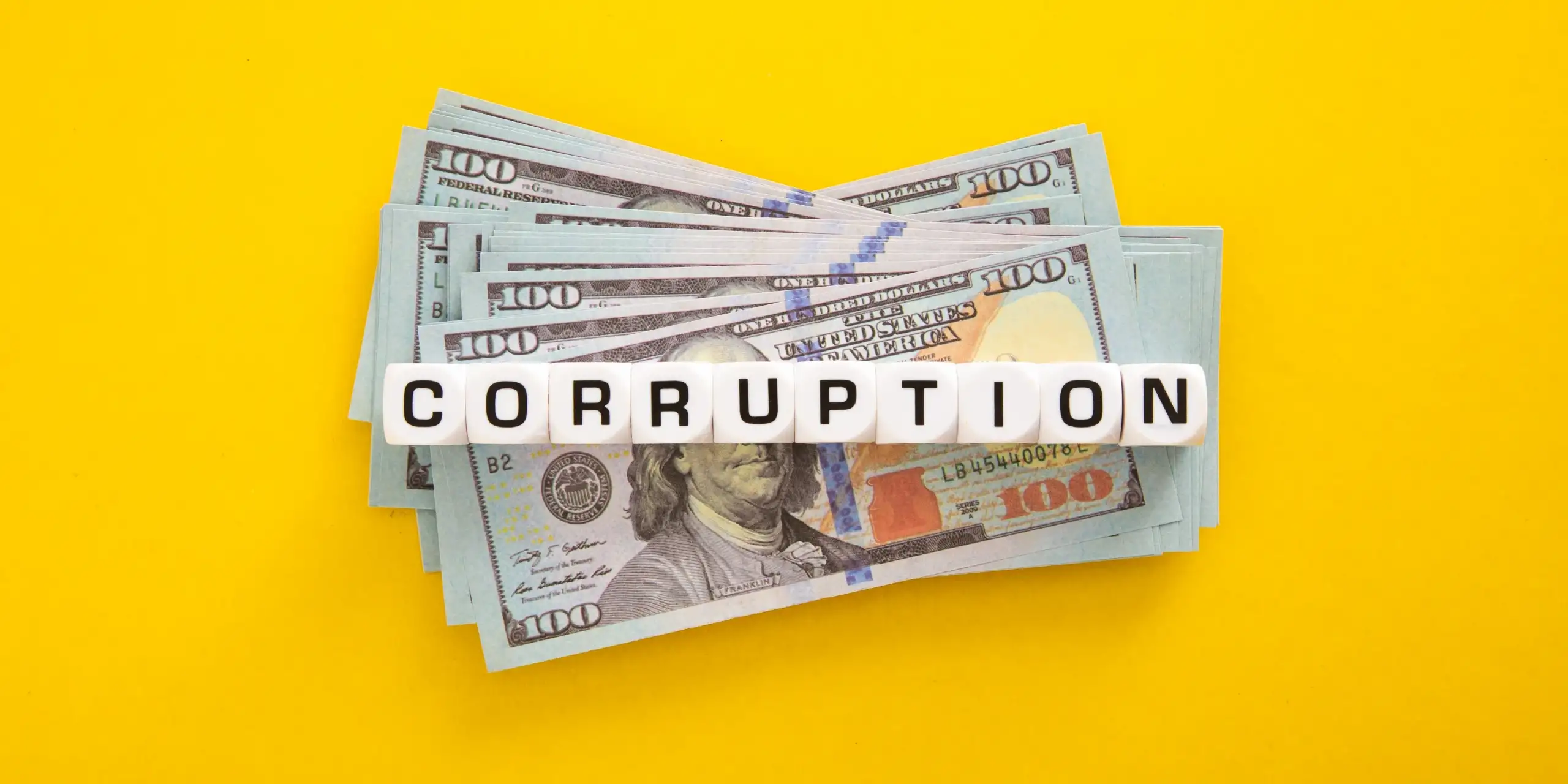In fact, capital-intensive links are important to ensure the long-term development of companies, and to meet the research and development costs required for aircraft production. They involve major investments, partnerships and strategic agreements between the various economic players.
These investments are essential not only for the manufacture of aircraft, helicopters and drones, but also for R&D, which is particularly concerned by the urgent need to reduce the environmental impact of aircraft. Investors are generally public, private and investment funds.
The same financing needs apply to air and space transport, where airlines rely on investors, as well as share and bond issues, to finance the purchase or lease of aircraft.
Legal and shareholding structure in the air and space transport sector
The legal breakdown of companies in the Air & Space Transportation sector shows a clear predominance of commercial companies. They account for 68% of companies.
- Passenger air transport accounts for the majority of companies (40.1% of entities), and employs 62% of the workforce.
- Transport equipment rental and leasing accounts for 36.01% of companies but only 0.1% of employees.
- Auxiliary air transport services account for 20.3% of companies and 36.5% of employees. These include all activities related to air transport, such as the operation of airport terminals and airports, airport and air traffic control activities, and ground services.
Focus on air and space transport companies with share capital
The Air and Space Transport sector comprises 2,401 companies, the majority of which are commercial enterprises (68%), but also include sole proprietorships (29%), state-owned enterprises (1%) and others (2%).
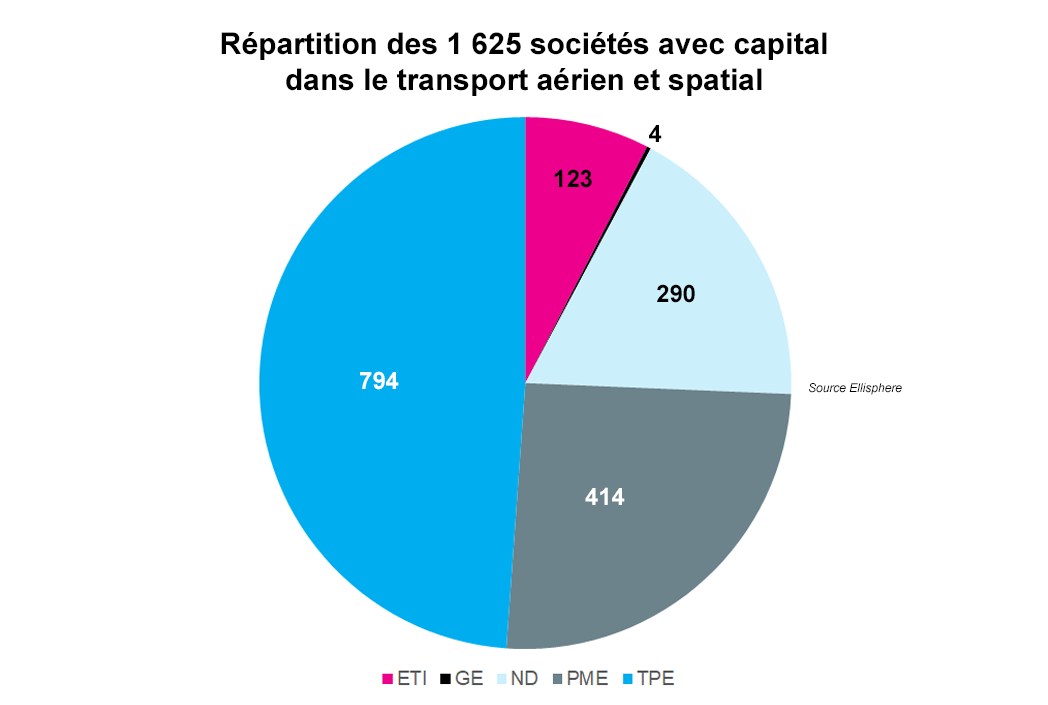
Of these 2,401 entities, 1,625 (68%) are companies with capital (and therefore shareholders).
Only one company is listed on the stock exchange: Aéroports de Paris, which employs over 5,000 people. The company has majority control of 42 companies and holds stakes in 152 (directly or indirectly).
The 1,624 other companies with capital that are not listed on the stock exchange are distributed as follows:
- 3 Grandes Entreprises (GE) belonging to large listed groups: Air France, Ariane espace, Garuda Indonesia Holiday France.
- 123 intermediate-sized companies (ETI ), 101 of which belong to major groups.
- 49 are controlled by a banking group (BNPP, BPCE, BRED, Crédit Agricole).
- 7 are controlled by a public body (state or local authority).
- 1,498 SMEs, or the majority of companies in the sector (92%), whose main activity is repair and maintenance.
- 1,325 (88%) have fewer than 10 employees:
-
-
- 280 are majority-owned by one company and 243 belong to a group.
- 294 are majority-owned by individuals.
- 173 have more than 10 employees and are 79% controlled by a group.
-
-
Of the companies in this sector, 36% are majority-owned by French companies.
Graphical legend below: Legal entities 33%, Individuals 19%, and Miscellaneous 48%, which includes investment funds, unknown persons and highly diluted shareholders.
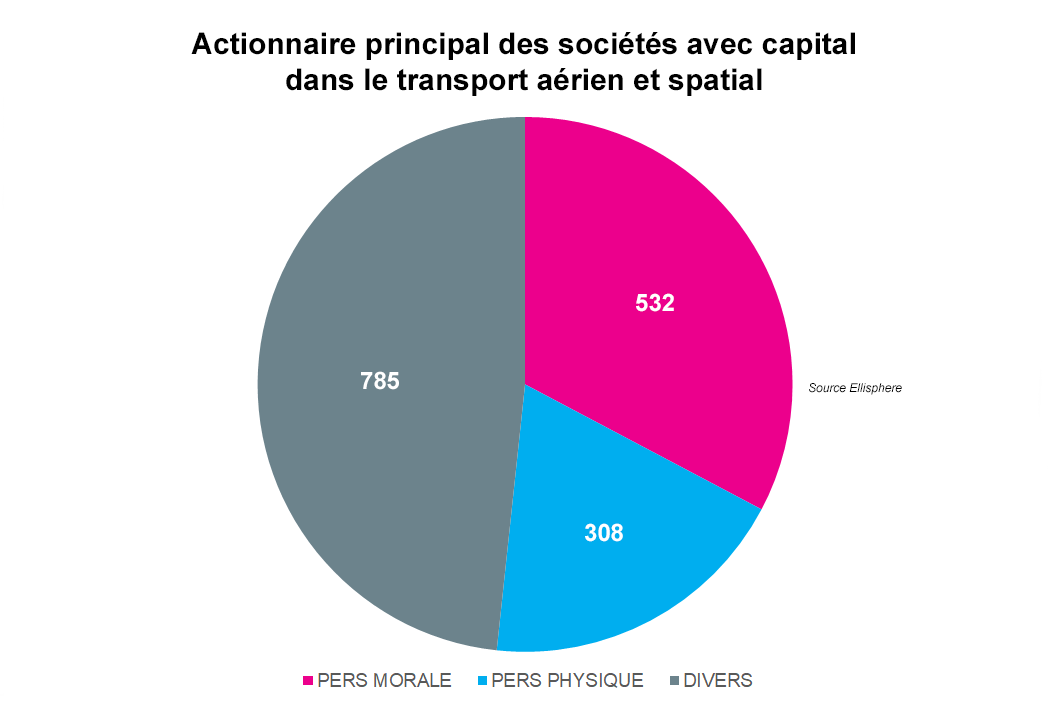
Legal and ownership structure of the Aerospace Construction sector
In France, the dominant legal form in the Aerospace Construction sector remains the commercialcompany (61% of entities).
Individuals account for 35% of companies, mainly involved in aircraft repair and maintenance. The remaining 4%, referred to as "Other", include private law groups, other legal entities registered with the RCS, foreign legal entities and unincorporated private law groups.)
Focus on companies with share capital in the aerospace industry
The Aerospace Construction sector comprises 946 companies, 61% of which are trading companies, 35% sole traders and 4% "other".
Of these 946 entities, 61% are companies with capital (577 companies), i.e. with shareholders.
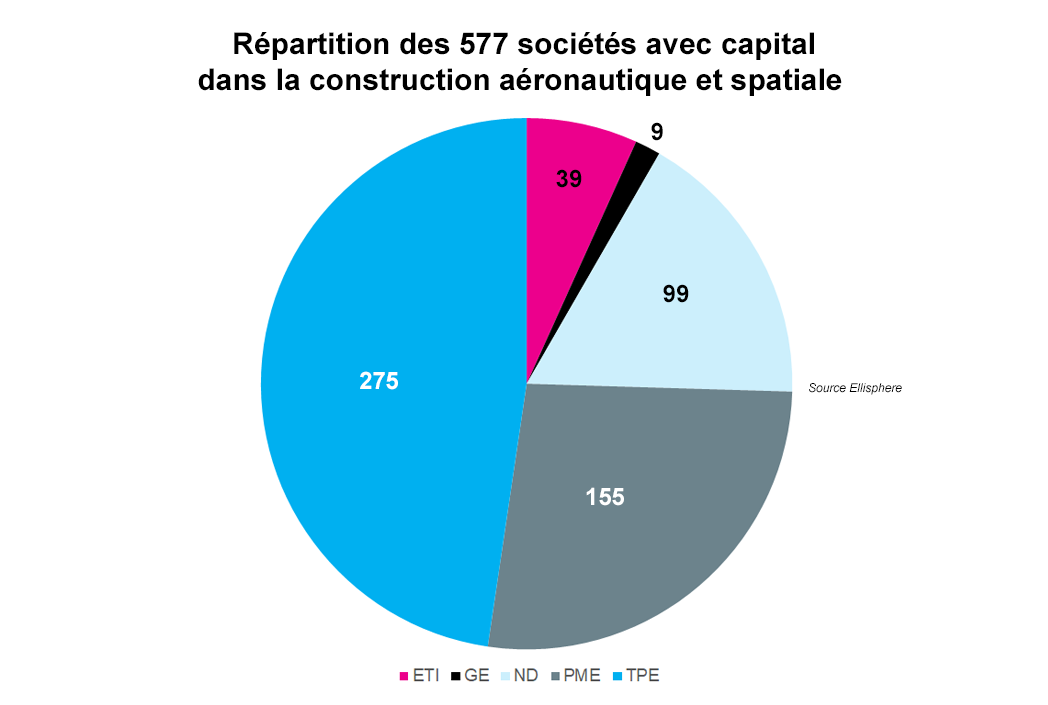
Of these 577 companies with share capital, 3 are listed on the stock exchange: Dassault Aviation, Latecoere and Drone Volt.
Dassault Aviation alone controls 38 direct and indirect subsidiaries.
The other two companies are SMEs, Latecoere controlling 26 subsidiaries and Drone Volt controlling 6 subsidiaries.
The remaining 574 companies with capital are not listed on the stock exchange, and include a majority of SMEs:
- 8 Large Companies controlled by Airbus, Safran, Thales or Ariane Group.
- 37 ETIs also belong to major groups (Safran, AIR France, Sabena, Dassault...) or to the French government.
- 529 are SMEs or VSEs (i.e. 92%).
- 398 companies (75%) have fewer than 10 employees:
-
- 56 are owned by a company (46 by a group).
- 342 are independent, majority-owned by an individual.
-
- 131 have more than 10 employees and are 75% owned by a group.
Legend below: Miscellaneous, i.e. investment funds - Diluted shareholders.
